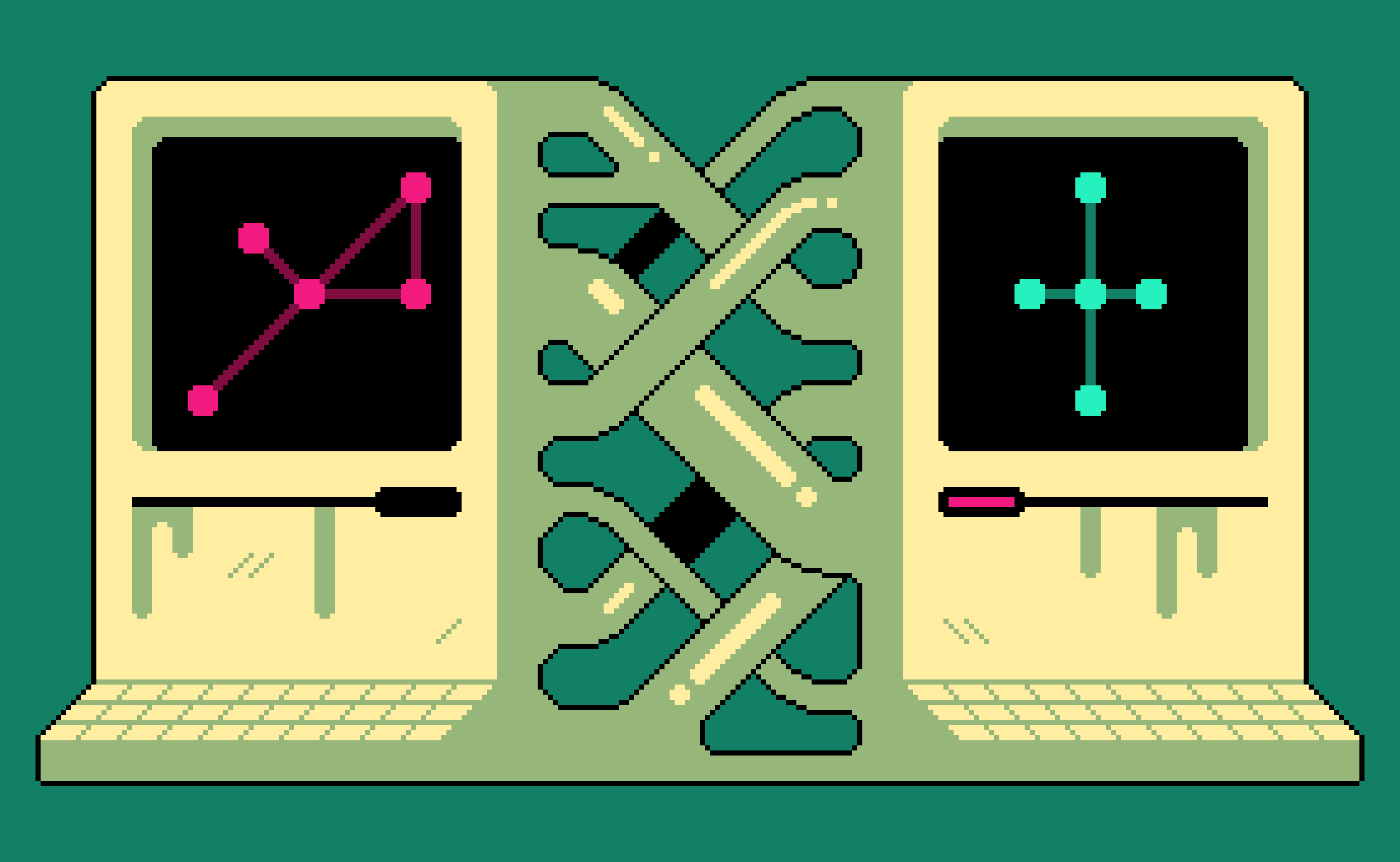How to get blockchains to talk to each other

Blockchain boosters love to compare the technology to the early days of the internet. Blockchains, it’s often said, will open the door to a new global financial system that works like the internet, except instead of moving around little packets of information, it moves money. But there’s a big problem with all that: at the moment, blockchains don’t talk to each other.
This piece first appeared in our twice-weekly newsletter, Chain Letter, which covers the world of blockchain and cryptocurrencies. Sign up here—it’s free!
As new blockchains and other distributed ledger systems proliferate, the result is kind of like a petri dish full of bacteria. They keep multiplying, but they don’t seem headed toward any kind of higher-order organism. The scene is similar to the pre-internet days of the 1960s and 1970s, says Thomas Hardjono of MIT’s connection science program, when there were several separate technical approaches to constructing computer networks. Like then, he says, the key to moving things forward lies in figuring out how to make these individual systems work together.
In the 1970s and 1980s, a combination of academic and US military research led to the construction of a common infrastructure that allowed individual networks to share resources, especially in the event that one of the networks was attacked. We know it as the internet protocol suite, which includes the transmission control protocol (TCP) and the internet protocol (IP)—the bedrock of today’s internet.
As nations consider launching their own cryptocurrencies, Hardjono says, there is the potential to introduce “risk and technical liabilities into your economic system.” If a blockchain system could respond to an attack by transferring its crypto-assets and other functions to a different distributed ledger, that might help avoid a crisis.
Hardjono and two colleagues at MIT argue in a new paper (PDF) that today’s blockchain developers should borrow a concept from the internet protocol suite called the datagram, which is a common unit of information that can move across different networks. “Every network that sees it knows how to parse it and knows how to forward it,” Hardjono says. “What is the datagram equivalent for blockchain systems?”
A startup called Aion is working on answering that question. The company is developing what it calls a “token bridge” that will let holders of Ethereum-based tokens back up their assets on another blockchain—initially, one built and run by Aion—without duplicating the actual monetary supply, says Matthew Spoke, the company’s founder.
The process relies on a group of computers, also called nodes, that have the ability to recognize valid transactions and write new ones to each chain, Spoke says. The nodes that form the bridge will also have a process for reaching agreement amongst themselves and deciding whether to respond to a certain transaction on one of the chains by executing a corresponding one on the other.
Spoke says a big difference between the pre-internet days and the blockchain world is the money: today’s competing protocols are often backed by billions of dollars of investment. That will probably ensure that many will succeed, meaning the future will be ruled by numerous blockchains, he says, and interoperability will be key to mainstream adoption. Whatever we end up with, it probably won’t look like the internet—but it could be just as transformative.
Keep Reading
Most Popular
Large language models can do jaw-dropping things. But nobody knows exactly why.
And that's a problem. Figuring it out is one of the biggest scientific puzzles of our time and a crucial step towards controlling more powerful future models.
How scientists traced a mysterious covid case back to six toilets
When wastewater surveillance turns into a hunt for a single infected individual, the ethics get tricky.
The problem with plug-in hybrids? Their drivers.
Plug-in hybrids are often sold as a transition to EVs, but new data from Europe shows we’re still underestimating the emissions they produce.
Stay connected
Get the latest updates from
MIT Technology Review
Discover special offers, top stories, upcoming events, and more.